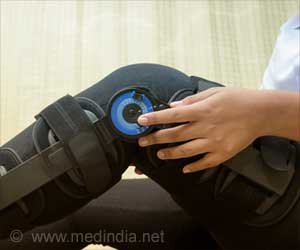New information about fault behavior has been obtained via recent collaborative studies of stream channel offsets along the San Andreas Fault.
New information about fault behavior has been obtained via recent collaborative studies of stream channel offsets along the San Andreas Fault. The findings could affect how we understand the potential for damaging earthquakes.
The collaboration was led by researchers from Arizona State University (ASU) and UC (University of California) Irvine.The researchers' findings encompasses their work at the Carrizo Plain, which is located 100 miles north of Los Angeles and site of the original "Big One" - the Fort Tejon quake of 1857.
In one of the studies, Ramon Arrowsmith, an associate professor in the School of Earth and Space Exploration in ASU's College of Liberal Arts and Sciences, and Dr. Olaf Zielke employed topographic measurements from LiDAR (Light Detection and Ranging), which provide a view of the earth's surface at a resolution at least 10 times higher than previously available, enabling the scientists to "see" and measure fault movement, or offset.
To study older earthquakes, researchers turn to offset landforms such as stream channels which cross the fault at a high angle.
A once straight stream channel will have a sharp jog right along the fault and indicate that prior offset.
This highly detailed overhead view of Carrizo Plain stream channels measured the offset features linked to large earthquakes in this section of the southern San Andreas Fault. This virtual approach is not a substitute for going out and looking at the features on the ground," said Zielke.
In the second Science Express study, a team led by UCI's Lisa Grant Ludwig with postdoctoral scholar Sinan Akciz and Ph.D. candidate Gabriela Noriega determined the age of offset in a few Carrizo Plain dry stream channels by studying how much the fault slipped during previous earthquakes.
Instead of having the same slip repeat in characteristic ways, researchers found that slip varied from earthquake to earthquake.
"When we combine our offset measurements with estimates of the ages of the offset features determined by Lisa's team and the ages of prior earthquakes, we find that the earthquake offset from event to event in the Carrizo Plain is not constant, as is current thinking," Arrowsmith said.
Source-ANI
RAS
 MEDINDIA
MEDINDIA




 Email
Email




